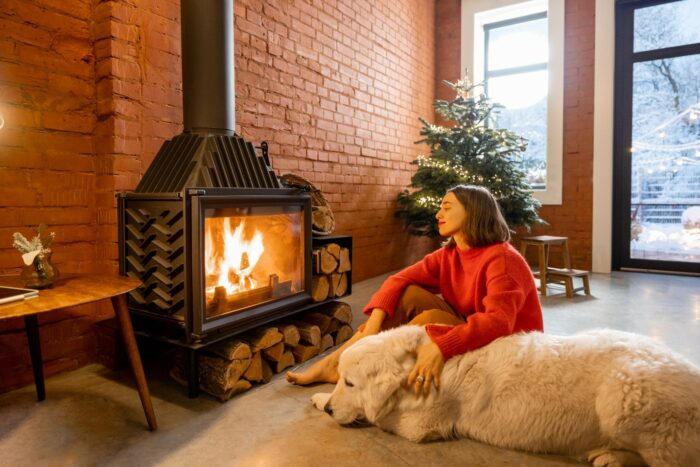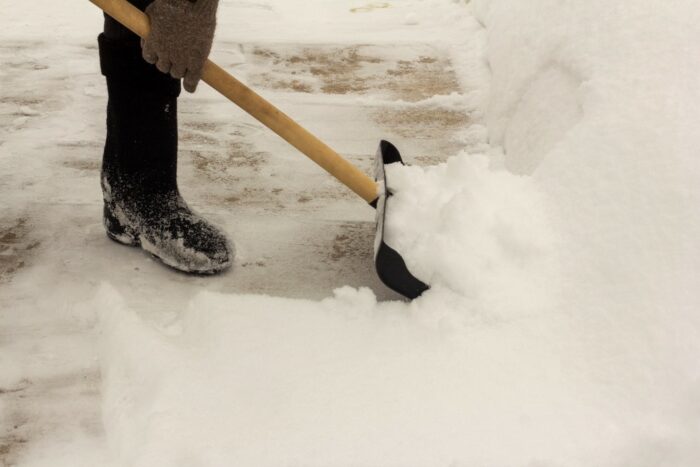
There’s something magical about watching silver snowflakes fall obliquely through the trees, forming a feathery blanket across the landscape. But the experience can quickly turn dreadful when the winter night descends on your property, layer by layer.
Snowstorms come with one inescapable fact: the hassle of cleaning up the piles of snow and inspecting your home for damage and hazards. This is one of the reasons why you should winterize your home before the first snowfall – i.e., to alleviate the damage.
If you’ve been hit by a snowstorm or you’d like to be well-prepared when it does, read on for a few tips on safety and how to clean up the mess left by Jack Frost.
Safety First!

Before picking up your shovel and heading out to tackle the snow, take all the necessary precautionary measures to protect yourself from harm. Always prioritize your safety.
- Never rush into a task before analyzing the potential risks and hazards.
- Wear warm and waterproof clothing, including a hat and gloves.
- Use the right tools for the task to make the job easier and reduce the risk of injury.
- Stretch before getting down to business, and learn the right techniques for using the tools.
- Suppose you feel a task is a tad bit above your capabilities. In that case, there’s no shame in backing down and calling in a professional.
- Watch out for potential hazards that could harm your pets. This includes ice patches, sharp icicles, power lines, loose branches, and even chemical burns from de-icing agents.
Tips to Deal with the Aftermath of a Snowstorm
Without proper care, the aftermath of a snowstorm can pose a significant risk of injury and damage to your property. Here are some tips to help you get the job done safely and with ease:
1. Check the Inside of the House

The inside of your home is meant to be a haven. It’s supposed to keep you safe and warm, away from the howling Arctic winds and biting frost. For this reason, it should be one of the first places you inspect and clean up during and after a snowstorm.
So, what should you check?
- Are Any of the Windows Cracked or Broken? Flying debris and cold gusts of wind whipping against your home may have shattered a windowpane or two. And even if the windows appear unscathed, look for loose fittings that may be inviting the frigid winter air into your home. If you can ‘DIY’ the problem, have a go at it; if not, call for a repairperson.
- What is the State of Your Chimney? The fireplace is the go-to place to curl up with a cup of hot chocolate. But any structural damage or blockage in the chimney can turn the fireplace into a hazard. If you suspect any damage, ask a professional to assess and fix it as soon as possible.
- Are Smoke and Carbon Monoxide Detectors Working? It’s best to replace the batteries in your smoke and carbon monoxide detectors before the first snowfall. This may be a potential lifesaver during a snowstorm, especially when there’s a power outage and when you need to use the fireplace to stay warm.
- Any Damage to the Plumbing? If there are flooding or water flow problems due to frozen pipes, shut off the water supply to prevent further damage and call a professional to make necessary repairs.
2. Clearing the Snow

The question of when to clear snow is a bit tricky to answer.
On the one hand, it’s tempting to shovel away the snow as soon as the first layer forms. But another layer will form sooner than you can store your shovel in the tool shed.
On the other hand, waiting too long gives the snow time to settle and get packed down—forming ice that is a headache to chip away.
A good rule of thumb is to wait until the snowstorm stops completely – i.e., when the snow is still fresh and light enough to clear safely with relative ease.
3. Be on the Lookout for Damaged Trees, Branches, and Power Lines

With high winds and heavy snow pilling weight on tree tips comes the risk of downed branches. Carefully take a stroll around your property to spot broken branches that may be hanging precariously. Also, inspect the trees in your yard for cracked limbs that expose weak points.
You can easily clean up and trim the broken branches for foundational plantings or smaller trees. But if you need to hack down a tree or any other major removal, call in a professional to avoid injury and further damage.
4. Check the Roof

Most roofs are designed to withstand the load of reasonable snowfall. But an ice dam can form after a snowstorm—preventing ice from draining off properly. In addition to the dangerous dagger-like icicles that form along the gutters, ice dams can cause snow and water to back up—exerting several pounds of stress on the roof. If not addressed immediately, this can lead to leaks, loose shingles, and other kinds of structural damage to the house.
One way to clean up the roof after a snowstorm is by using a roof rake to pull off snow safely from the ground (never walk on a roof covered with snow). You can also use de-icing methods to clear ice dams and allow water to drain off the roof.
5. Don’t Drive Your Vehicle Right Away

Brush or scrape off any snow that may have accumulated on your vehicle using the right tools and de-icing agents. But keep in mind that salt and other de-icing materials may cause rust and corrode vehicle parts when exposed to higher temperatures. So make sure you add “visit the car wash” to your schedule shortly after a snowstorm cleanup.
Also, remember to warm up the engine for a few minutes before sitting behind the wheel. And before driving off, give road crews and disaster response teams time to clear roads.
Bottom Line
Dealing with the aftermath of a snowstorm often requires more than a mop and a shovel. It demands a certain level of prudence to get your home back into shape effectively, quickly, and safely. But this does not mean that it has to be overwhelming. The tips discussed above should set you up to deal with whatever Jack Frost throws at you.
"If we had no winter, the spring would not be so pleasant: if we did not sometimes taste of adversity, prosperity would not be so welcome."





